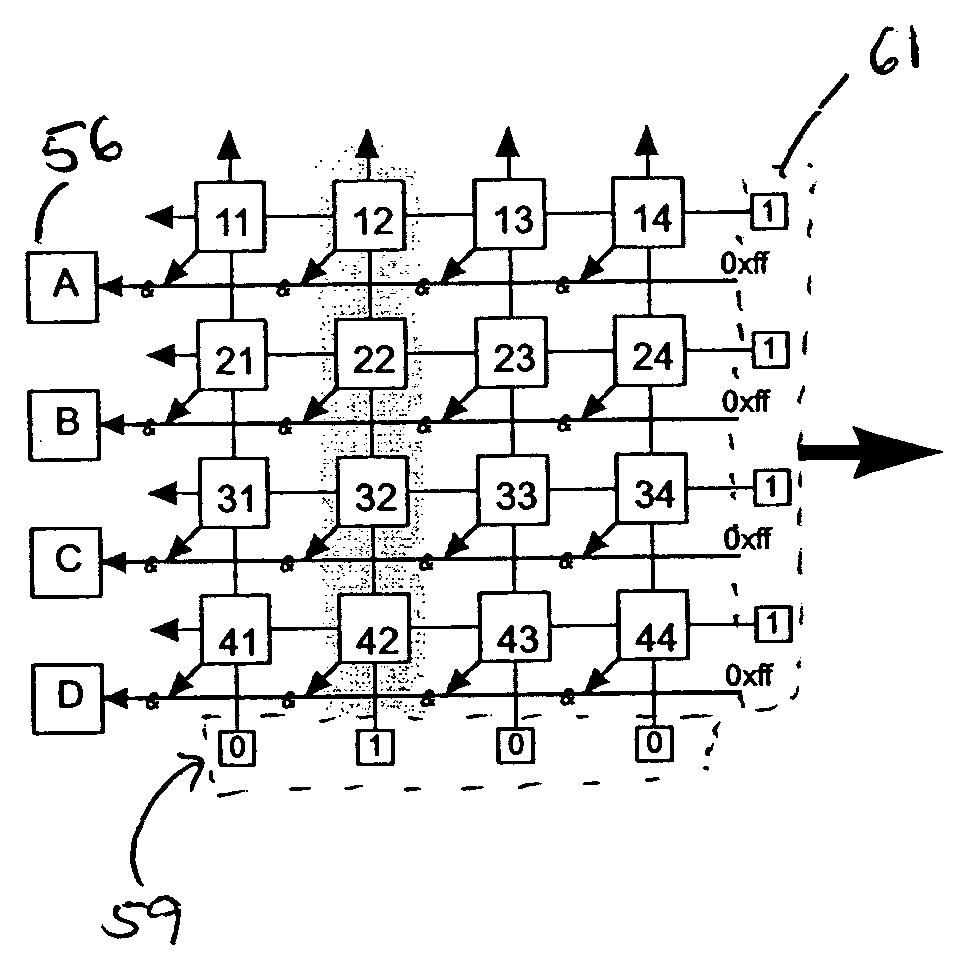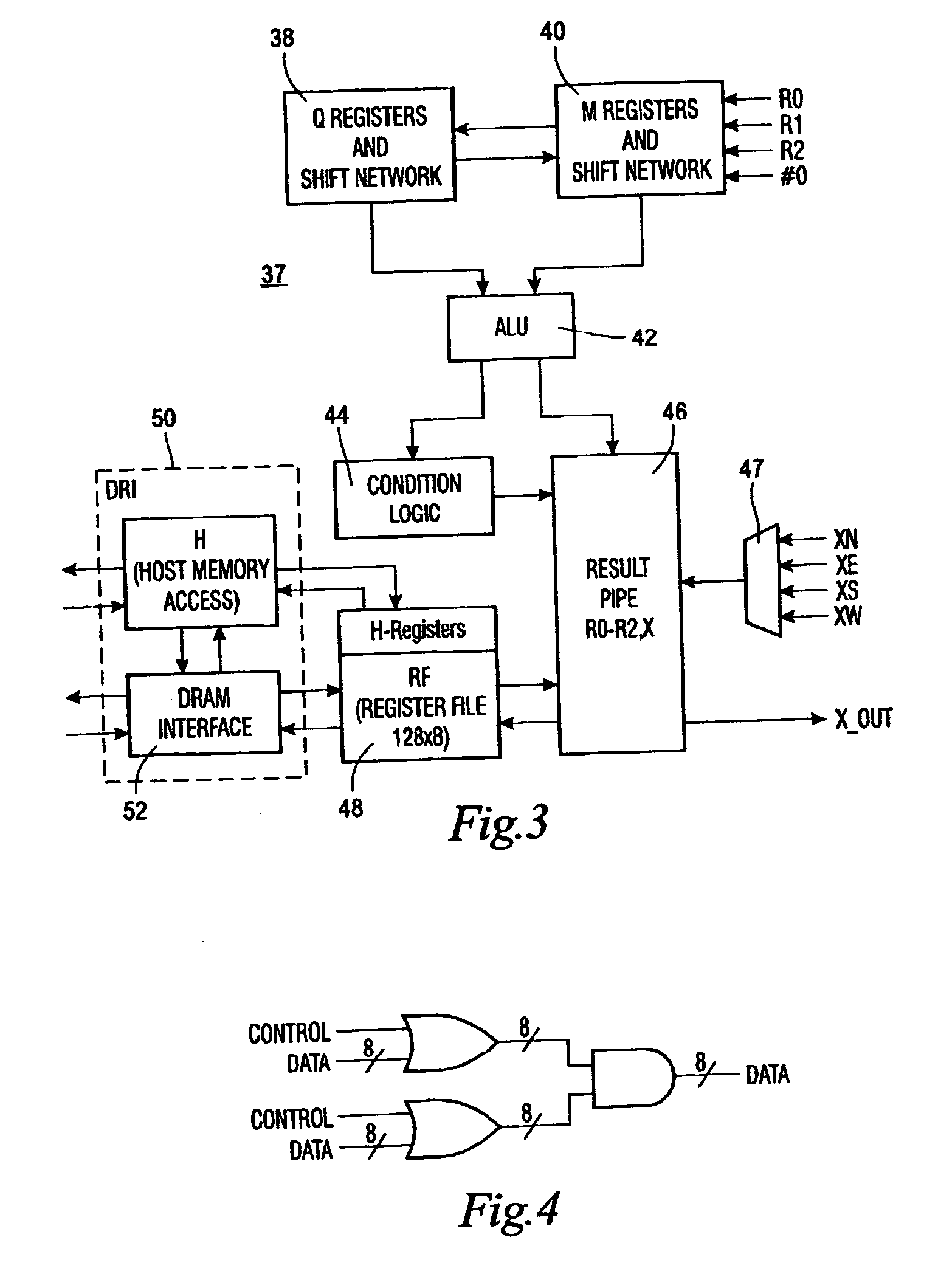Method for manipulating data in a group of processing elements
a data and processing element technology, applied in the field of parallel processing, can solve the problems of special machines, excluded from mass market applications, and high cost of active memory computers
- Summary
- Abstract
- Description
- Claims
- Application Information
AI Technical Summary
Benefits of technology
Problems solved by technology
Method used
Image
Examples
Embodiment Construction
[0030] Illustrated in FIG. 2 is a high level block diagram of one example of an active memory device 18 on which the methods of the present invention may be practiced. The reader should understand that the methods of the present invention are generally applicable to any group of processing elements having the necessary physical connections between PEs to enable the manipulation of data as required by the methods. The hardware illustrated in FIG. 2 is disclosed for purposes of illustration and not limitation. Furthermore, those of ordinary skill in the art will recognize that the block diagram of FIG. 2 is an overview of an active memory device with a number of components known in the art being omitted for purposes of clarity.
[0031] The active memory device 18 of FIG. 2 is intended to be deployed in a computer system as a slave device, where a host processor (e.g. CPU 12 in FIG. 1) sends commands to the active memory device 18 to initiate processing within the active memory device 18...
PUM
 Login to View More
Login to View More Abstract
Description
Claims
Application Information
 Login to View More
Login to View More - R&D
- Intellectual Property
- Life Sciences
- Materials
- Tech Scout
- Unparalleled Data Quality
- Higher Quality Content
- 60% Fewer Hallucinations
Browse by: Latest US Patents, China's latest patents, Technical Efficacy Thesaurus, Application Domain, Technology Topic, Popular Technical Reports.
© 2025 PatSnap. All rights reserved.Legal|Privacy policy|Modern Slavery Act Transparency Statement|Sitemap|About US| Contact US: help@patsnap.com



